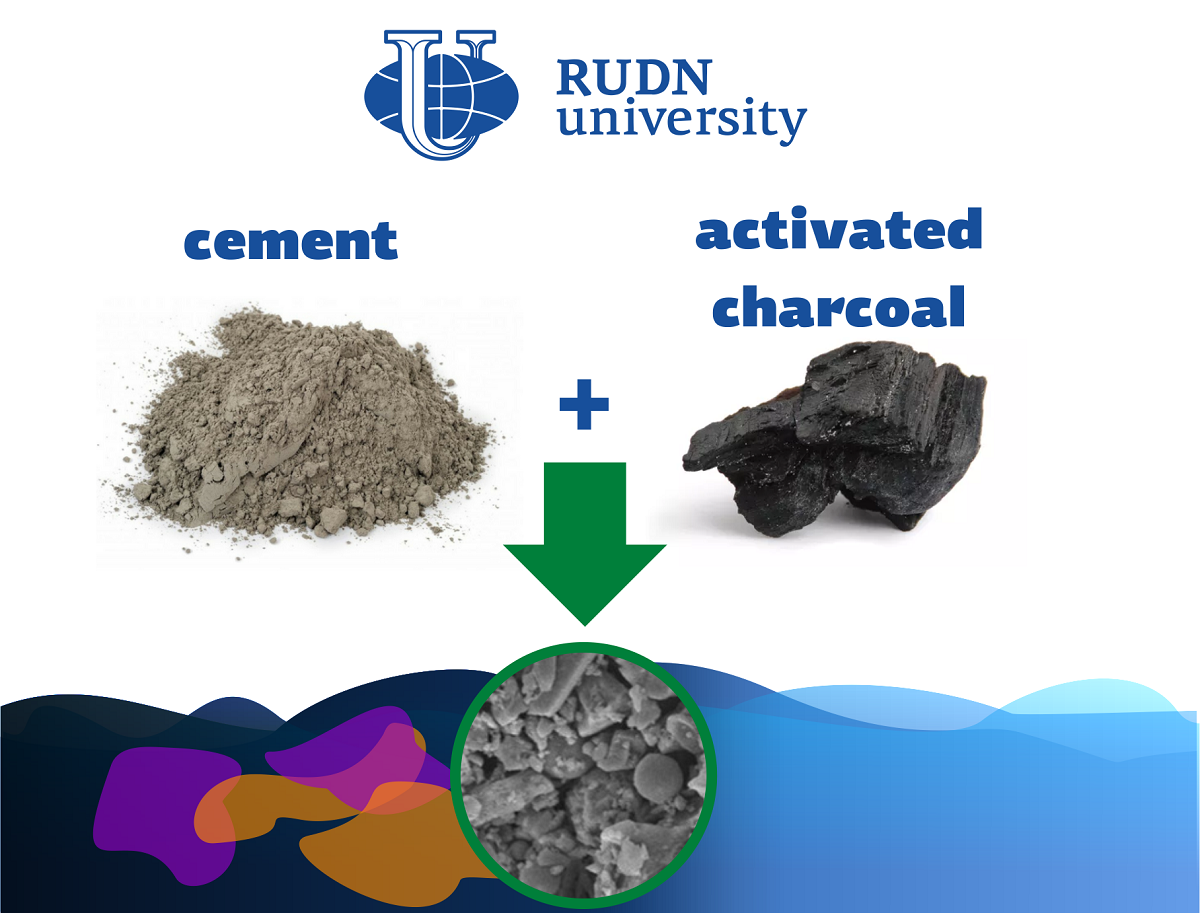RUDN engineers have created a filter for purifying water from coal and cement, and its effectiveness was proved using the application
Cement and concrete are used not only in construction. In combination with other chemical compounds, they can become, for example, a filter for cleaning water from toxic substances. Coal and other carbonaceous materials are also known for their ability to absorb contaminants. Their compound with cement has been studied in some depth for mechanical properties, but there is no evidence on how the combination of cement and coal can help in water purification.
“There are no reports in the literature aboutthe use of cement-coal composites as an adsorbent for water purification. Therefore, we set a goal to unlockthe potential of these materials as an adsorbiruyuschayatheir coating and to remove pollutants from the water. Cement can be used as a carriermedium, frame, and activated carbon acts as a filler, ” — Candidate of Technical Sciences Dmitry Koroteev, Professor of Engineering RUDN Academy.
RUDN researchers have created a filter of cement and coal in different proportions — coal is0%, 10%, 30% and 50% of the mass of cement. The effect of the filter was checked in the experiment — methylene blue dyes and podamine B wereadded to the water and a cement-coal complex was placed there. To assess the effectiveness of the complex, the authors used an innovative technique — scientists judged how much dye was absorbed intothe filter, andabout changing the colorof the watersolution.And this colorimetric analysis was carried out using conventional smartphones.
A special smartphone app developed by the authors in previous studies showed how the color of the solution changes. The best result for methylene blue was shown by a complex with 50% coal. In an hour and a half, the solution turned from a saturated blue to an almost transparentone — the cement-coal composite absorbed up to 80% of the dye. The results for rhodamine B were less pronounced — in an hour and a half, the complex absorbed about 70% of the dye. Scientists used the filter several times to assess how its effectiveness changed. The amount of dye removed slowly decreased each time and reached 50%-57% by the eighth cycle of use.
"SinceMartfon, they have become an integral part of our lives. Now the use of smartphones is not limited to entertainment, and they can be used for convenient scientific installations. In some studies, it has been suggested that colorimetric analysis can be usedto determinethe concentration of the stained compound in an aqueous solution. We have shown that all quantitative colorimetric analysis can be carried out using a smartphone-based system,"Huang Juezhu,student of theRUDN Academy of Engineering.
The results are published in Construction and Building Materials
A RUDN agrotechnologist has identified wheat genotypes that are resistant to a dangerous fungal pathogen that infects plants even before the snow melts and reduces yields.
RUDN University engineers have calculated the parameters of a system that can prevent lunar power plants from overheating. These developments will be needed when planning for long-term lunar missions and colonizing the satellite.
Landfills are the third largest source of anthropogenic methane in the world. They account for ~11% of estimated global emissions. Methane is 80 times more powerful than carbon dioxide and is the second largest driver of man-made climate change. Scientists from around the world met at Zhejiang University's Hangzhou campus to determine the best available technologies for recovering energy and materials from non-recyclable residual waste.
